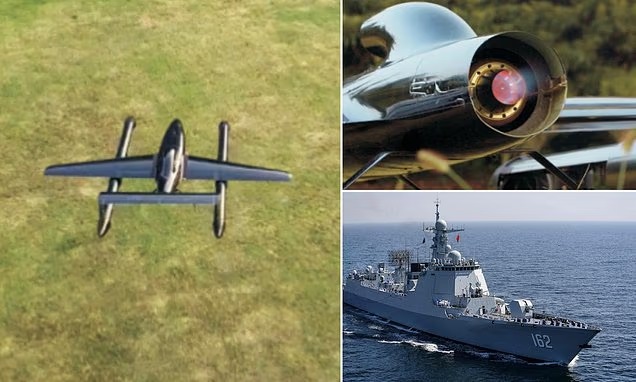
Follow WOWNEWS 24x7 on:

China has taken a dramatic leap forward in military aviation with the unveiling of what it claims is the world’s first jet-powered vertical takeoff and landing (VTOL) drone. Developed by Beihang University in Beijing, this breakthrough platform could transform every Chinese warship into a mobile aircraft carrier, offering unmatched flexibility and speed in naval operations. This update breaks down the innovation, its strategic implications, and the technology behind the drone that’s turning heads across global defense circles.
Key highlights of the breakthrough
1. China’s new drone combines vertical lift and jet-powered cruise in a single airframe
2. It can launch from virtually any warship, even in rough seas, without the need for a runway
3. The drone uses a patented retractable fairing system to reduce drag and boost speed
4. The project took 10 years to complete, with development starting in 2015 and a stable design achieved by 2019
5. The drone’s aerodynamic configuration solves a long-standing challenge in aviation: balancing vertical lift with high-speed efficiency
Design and engineering marvel
At the heart of this innovation is a dual-system propulsion setup
- Compact rotors mounted at the bottom provide lift during takeoff and landing
- A miniature turbojet engine powers high-speed cruise flight once airborne
- The drone’s teardrop-shaped fuselage and blended wing-body design allow for seamless transition between vertical and horizontal flight modes
What sets this drone apart is its retractable fairing system. Once the rotors shut down during forward flight, aerodynamic covers slide over the rotor hubs, reducing parasitic drag by up to 60 percent. This feature was validated through computational fluid dynamics simulations and wind tunnel testing.
Runway independence and naval utility
Unlike traditional drones or fighter jets that require long runways or aircraft carriers, this jet-powered VTOL drone can launch from the deck of any destroyer, frigate, or amphibious vessel. This capability dramatically expands China’s naval reach and operational flexibility
- The drone can take off vertically like a helicopter, making it ideal for cramped or mobile launch platforms
- Once airborne, it transitions into a fast, long-range cruise mode, enabling surveillance, strike, or escort missions
- Its ability to operate in rough seas and from non-specialized ships means China can deploy air power from virtually anywhere
This development could allow China to bypass the limitations of conventional carrier-based aviation and rapidly scale its aerial presence across the Indo-Pacific.
Strategic implications and global context
The drone’s emergence comes amid rising competition in unmanned aerial systems, particularly between China and the United States. While the US Air Force’s XQ-58A Valkyrie offers high-speed capabilities, it still requires long runways or carrier decks. China’s new platform sidesteps that constraint entirely
- The drone could serve as a loyal wingman to manned aircraft, using AI to make tactical decisions independently
- It may also be deployed for reconnaissance, electronic warfare, or precision strikes in contested zones
- Its development by Beihang University, a top aviation institute under US sanctions, signals China’s intent to push forward despite geopolitical headwinds
What comes next
With the drone now publicly revealed, analysts expect rapid testing and deployment phases. If successful, this technology could reshape naval doctrine, enabling distributed air operations and reducing reliance on large carriers. China’s move also raises questions about how other nations will respond. Will the US accelerate its own VTOL drone programs? Will India or Russia pursue similar capabilities? The race for next-gen aerial dominance just got a new contender.
Sources: South China Morning Post, Interesting Engineering, SpaceEyeNews, Firstpost, Times of Innovation





